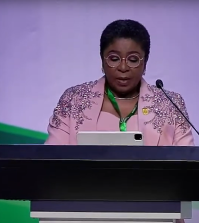Former UK CTO calls for reform of digital funding systems

The UK government needs to find a better way to finance its digital transformation, according to the government’s former chief technology officer.
James Stewart, who co-founded the UK Government Digital Service, last week published a paper outlining recommendations for how the government could spend less on digital services, while delivering them more effectively.
The paper, co-written by public finance specialist Manj Kalar, urged the government to use the 2019 spending review to identify a new approach to funding its digital programme. The rules and processes that regulate how the government budgets for, and spends on, digital technology are a barrier to scaling the benefits of government innovation, the authors found.
Budgetary and accounting reforms needed
The document recommends that the Treasury should launch a Centre of Excellence with a cross-functional team of Treasury officials, auditors, developers and programme managers. The centre should develop and deliver a strategy for smarter spending enabled by technology, and identify best practice.
The centre should also run experimental pilots to help identify ways to innovate with technology during the lifespan of existing contracts, optimising operations and maximising value, the report says. And it calls for new services to be funded via revenue budgets rather than capital: current rules on budgetary control only allow accounting officers to move money from revenue to capital budgets, but the paper argues that the opposite should also be possible in cases where doing so would deliver long-term savings.
The Centre of Excellence could then compare performance against traditional capital-intensive, fixed-term programmes, providing government with the data to make good decisions.
Stewart and Kaler also recommend that the Government Digital Service should update the forecast of savings from digital transformation, which have not been calculated since 2012. And they call for finance to be made available to investigate alternative to legacy IT contracts well before their expiry, giving officials the information to plan and implement reforms at key points rather than simply re-letting outmoded services.
Political drive dissipated
The paper flows criticism on the pace of government digital reform from Frances Maude, former Cabinet Office minister. In the foreword to a report on the use of technology in government published by think tank the Policy Exchange in May, Maude wrote of the “worrying signs” that progress on the government’s digital transformation programme had slipped.
“Without constant pressure from the centre, the natural tendency in any large organisation is for individual departments to slip back into defensive isolation,” he argued. “Government as a platform will not happen without clear direction from the top. It is time to reboot. Government 2.0 is overdue.”
Daniel Thornton, a programme director at think tank the Institute for Government, said that the government has made progress with making services digital – citing a pledge last week to create a data strategy. However, other developments have been delayed: for example, tax authority HM Revenue and Customs has postponed digital reforms due to the uncertainty and additional workload created by Brexit.
In recent years, Thornton suggested, digital transformation has slipped off the agenda of senior politicians: “This agenda needs to be led from the top of government, and so far the prime minister and the chancellor do not seem to have taken an interest,” he said.























